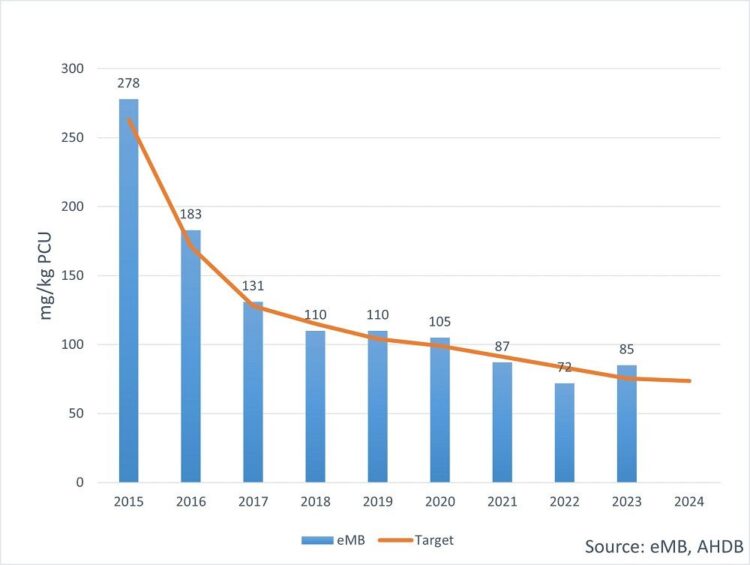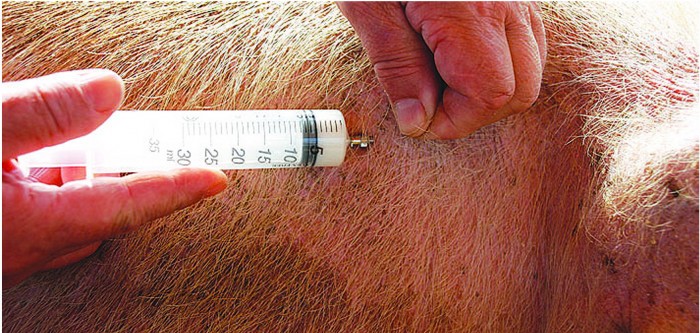Last year saw an increase in the amount of antibiotics used in the pig industry, to interrupt an otherwise downward trend since 2015.
Data collected by AHDB using the electronic Medicine Book (eMB) showed antibiotic usage in UK pigs last year of 85 mg/PCU (milligrams per population correction unit), an 18% increase on the 2022 figure of 72 mg/PCU.
However, the 2023 figure was still lower than the 87 mg/PCU recorded in 2021, indicating that the trend is still downwards.
AHDB pointed out that, after a 69% reduction over the nine-year period from the 2015 baseline figure of 278mg/PCU, it was expected that we may reach a nadir and a slight increase was always expected, particularly in the event of disease challenges on farms.
 But it added that what happens next year may give a better indication of whether we have reached that nadir, or if further reductions are possible without compromising animal welfare.
But it added that what happens next year may give a better indication of whether we have reached that nadir, or if further reductions are possible without compromising animal welfare.
The ban on the use of zinc oxide at medicinal levels in post-weaned pigs was always expected to have an impact on antibiotic use, although the full effect of that is probably yet to be felt.
Disease in pigs, as corroborated by other data, such as the Animal and Plant Health Agency (APHA) diagnostics statistics and notifications through the AHDB Significant Diseases Charter, particularly of swine dysentery, was a challenge in some farms in 2023.
The eMB data, which represents approximately 96% of pigs slaughtered in the UK, show increases in antibiotic classes that are used to treat the diseases shown to have greater prevalence in the APHA data.
The good news, however, is that use of highest priority critically important antibiotics remains at a very low level, almost halving from 0.013 mg/PCU to 0.007 mg/PCU in 2023. No Colistin use has been reported in pigs in 2023.
Responsible use
Mandy Nevel, AHDB’s Head of Animal Health and Welfare, said: “Using antibiotics where they are needed is considered responsible use.
“Not only do they safeguard animal welfare but, if used early in disease, they can also reduce the total amount used in a disease outbreak.
“Given the significant reductions in use over the last nine years, it was always anticipated that annual reductions would slow and perhaps even see some years’ use higher than others.
“The industry had many disease challenges last year and the effects of these were compounded by some vaccine shortages. This is likely to be an ongoing issue as the UK has very limited capacity for animal vaccine production.
“Additionally, the removal of zinc oxide, a product that reduces post-weaning diarrhoea, may mean some producers will need to revert to antibiotics to control diarrhoea. However, it is expected we will not see the full impact of that until 2024 figures are released next year.
“It is important to understand the reasons antibiotics are used. Towards the end of this year, eMB will be rolling out changes to the way it records the reason for treatment, with a broad area of treatment and more specific reason under each area.
“We hope that this will allow us to better analyse the data to track trends in use.”




